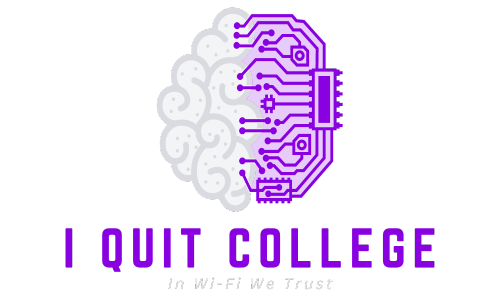The world of business is constantly evolving, and customer expectations are higher than ever before. To thrive in this competitive landscape, businesses need to adopt a customer-centric approach that puts their customers at the heart of everything they do. By prioritizing customer satisfaction, implementing customer-focused strategies, and fostering a customer-centric culture, businesses can unlock customer loyalty and create exceptional customer experiences.
Customer-centricity goes beyond just providing great products or services; it requires a shift in mindset and a commitment to understanding and meeting the unique needs of individual customers. This means recognizing that the traditional customer funnel is no longer effective in capturing the complexity of consumer behavior, and embracing a customer-first approach that considers every interaction and touchpoint a customer has with your business.
From the initial point of contact to post-purchase support, every interaction is an opportunity to create a positive customer experience and nurture a lasting customer relationship. By adopting customer-centric strategies and leveraging data-driven insights, businesses can tailor their offerings to meet customer needs and expectations, ensuring that every interaction is personalized and meaningful.
A customer-centric approach also involves continuously measuring and adapting strategies to ensure they remain effective and relevant. By monitoring key performance indicators such as customer satisfaction and retention rates, businesses can identify areas for improvement and make data-driven decisions to enhance the customer experience.
Embracing a customer-centric approach is not just a trend; it is a necessity for businesses that want to thrive in today’s customer-oriented market. By prioritizing customer satisfaction, fostering a customer-centric culture, and consistently adapting strategies to meet evolving customer needs, businesses can build strong customer relationships, drive loyalty, and set themselves apart from the competition.
Key Takeaways:
- Customer-centricity is essential for businesses to thrive in today’s competitive market.
- A customer-centric approach involves prioritizing customer satisfaction and understanding individual customer needs.
- Implementing customer-focused strategies and fostering a customer-centric culture are crucial for creating exceptional customer experiences.
- Continuous measurement and adaptation of customer-centric strategies are essential for staying relevant and effective.
- Embracing a customer-centric approach sets businesses apart and drives customer loyalty and relationships.
Recognize the Need for Change
The traditional customer funnel, which assumes a linear purchasing journey, is no longer sufficient in today’s rapidly evolving consumer landscape. Businesses must recognize the limitations of this traditional approach and embrace a customer-centric mindset to meet the demands of individual customers.
“The traditional customer funnel assumes a linear process from awareness to purchase.”
Customer behavior has evolved, influenced by new technologies and multiple touchpoints. A customer-centric approach acknowledges the complexity of consumer decision-making and focuses on understanding and addressing the unique needs of each customer.
By shifting from a traditional funnel to a customer-centric approach, businesses can build stronger connections with their target audience, improve customer satisfaction, and drive customer loyalty. This customer-centric strategy allows businesses to adapt to the changing market trends and tailor their offerings to meet the specific needs and preferences of their customers.
Why the traditional customer funnel falls short:
- A linear approach: The traditional funnel assumes that customers follow a predictable path from awareness to purchase. However, in reality, customers engage with brands and make purchasing decisions through various channels and touchpoints. This linear mindset fails to capture the complex and diverse nature of consumer behavior.
- One-size-fits-all: The traditional funnel treats all customers the same, ignoring the individual preferences and unique needs of each customer. This approach can result in missed opportunities and lackluster customer experiences.
- Limited insight: The traditional funnel primarily focuses on the end of the customer journey, neglecting valuable insights from earlier stages. Understanding the customer journey holistically allows businesses to identify pain points, opportunities for improvement, and areas where they can deliver exceptional customer experiences.
A customer-centric approach, on the other hand, places the customer at the center of all business decisions and interactions. It involves a deep understanding of customer preferences, the ability to provide personalized experiences, and the agility to adapt based on real-time data and feedback.
| Traditional Customer Funnel | Customer-Centric Approach |
|---|---|
| Treats all customers the same | Recognizes individual customer needs and preferences |
| Assumes a linear purchasing journey | Adapts to non-linear customer behavior |
| Focuses on the end of the customer journey | Considers the entire customer journey and touchpoints |
| Provides limited insights | Offers valuable insights at every stage of the customer journey |
Understand the Customer Journey
Mapping out the customer journey is a crucial step in creating a customer-centric business approach. By analyzing each stage of the journey, businesses can gain valuable insights into customer pain points, experiences, and needs. This understanding allows companies to tailor their strategies and deliver exceptional experiences at every touchpoint.
At the core of the customer journey is the customer’s path from initial awareness to making a purchase and beyond. Understanding this journey helps businesses identify the key stages where customers may encounter challenges or frustrations. These pain points present opportunities for improvement and innovation, ensuring a seamless customer experience from start to finish.
“The customer journey is like a roadmap that guides businesses towards delivering meaningful solutions that address their customers’ needs and desires.” – Amanda Johnson, Customer Experience Strategist
Each stage of the customer journey offers unique insights for businesses to enhance customer experiences. By identifying touchpoints where customers interact with the brand, companies can develop personalized strategies to meet their specific needs and expectations. This personalized approach not only improves customer satisfaction but also drives customer loyalty and advocacy.
One effective technique for understanding the customer journey is through the use of customer personas. These personas represent various segments of a company’s target audience and provide a visual representation of their different needs, motivations, and pain points. By creating customer personas, businesses can empathize with their customers and develop more targeted strategies and solutions.
Example of Customer Persona:
| Persona | Demographics | Goals | Pain Points |
|---|---|---|---|
| Emily | Female, 35-45 years old | Find a reliable daycare service | Limited availability of quality daycare options |
| Mark | Male, 25-35 years old | Buy a first home | Difficulty navigating the home-buying process |
| Lisa | Female, 55-65 years old | Plan a retirement trip | Overwhelmed by travel options and information |
By aligning their strategies with customer needs at each stage of the journey, businesses can create meaningful touchpoints and deliver personalized experiences that resonate with their target audience. This customer-centric approach not only improves customer satisfaction but also boosts brand loyalty and advocacy.
Image: A visual representation of the customer journey, highlighting the different stages and touchpoints where businesses can engage and provide value to customers.
Embrace a Multi-Touchpoint Approach
Implementing an omnichannel strategy is essential for businesses looking to create a seamless and consistent experience across all customer touchpoints. By incorporating real-time interactions and personalized messages, businesses can cultivate stronger relationships, enhance customer engagement, and foster loyalty.
An omnichannel strategy allows businesses to connect with customers through various channels such as websites, mobile apps, social media platforms, and brick-and-mortar stores. This approach ensures that customers can engage with the brand at any given time, from any device or location. By embracing this strategy, businesses can create a holistic customer experience that transcends individual touchpoints.
Real-time interactions play a vital role in an omnichannel strategy as they enable businesses to engage with customers instantaneously. Whether it’s through live chat support, social media responses, or interactive voice responses, real-time interactions provide the opportunity for timely and personalized assistance. By being available in the moment, businesses can address customer inquiries, resolve issues promptly, and deliver a more satisfactory experience.
Personalized interactions are another crucial aspect of a multi-touchpoint approach. By tailoring messages and experiences to individual customers, businesses can create a sense of personal connection and relevance. Personalization can include addressing customers by name, recommending products based on their preferences and purchase history, and providing targeted offers or promotions. These personalized interactions demonstrate that the business values the customer as an individual and can significantly enhance customer satisfaction and loyalty.
“Implementing an omnichannel strategy is essential for businesses looking to create a seamless and consistent experience across all customer touchpoints.”
When implementing a multi-touchpoint approach, businesses should strive for consistency in messaging, branding, and customer experience across all channels. This cohesion ensures that customers receive a unified experience, regardless of the channel they choose to engage with. By maintaining consistency, businesses can build trust and reinforce their brand identity in the minds of their customers.
Furthermore, collecting and analyzing customer data from multiple touchpoints allows businesses to gain insights into customer behavior, preferences, and pain points. This data can inform strategic decisions and help optimize the omnichannel approach further. By understanding how customers interact with various touchpoints and adjusting strategies accordingly, businesses can continuously improve the overall customer experience.
In summary, embracing a multi-touchpoint approach through an omnichannel strategy, real-time interactions, and personalized experiences is crucial for businesses seeking to build lasting relationships, increase customer engagement, and foster loyalty. By creating a seamless and consistent customer journey across all channels, businesses can deliver exceptional experiences that meet the evolving needs and preferences of their customers.
| Benefits of a Multi-Touchpoint Approach | Examples |
|---|---|
| Enhanced customer experience | Providing personalized recommendations based on customer preferences and previous interactions |
| Increased customer engagement | Offering real-time assistance through live chat support or social media responses |
| Improved customer loyalty | Delivering targeted offers and promotions tailored to individual customers |
Measure, Learn, and Adapt
Setting meaningful metrics like key performance indicators (KPIs) is essential for evaluating the success of a customer-centric approach. These KPIs can include customer satisfaction rates and customer retention rates, among others. By consistently measuring and analyzing these indicators, businesses can gain valuable insights into the effectiveness of their customer-centric strategies.
Continuous testing and optimization play a crucial role in improving the customer experience. By testing different strategies, businesses can identify areas for improvement and make necessary adjustments to enhance customer satisfaction. Optimization involves refining processes and systems to ensure they align with customer needs and preferences.
“Continuous testing and optimization are integral components of a successful customer-centric strategy. They allow businesses to stay agile and responsive to the ever-changing needs of their customers.”
Gathering feedback from customers is an important part of the measurement and learning process. By actively seeking feedback through surveys, interviews, and social media monitoring, businesses can gain valuable insights into customer preferences and identify areas where improvements can be made.
Analyzing data is another crucial aspect of measuring and learning. By examining customer data, businesses can identify patterns, trends, and areas where their customer-centric approach is thriving, as well as areas that need improvement. This data-driven approach enables businesses to make informed decisions and prioritize efforts where they are most needed.
| Benefits of Continuous Testing and Optimization | Methods |
|---|---|
| Improved customer satisfaction | List of methods for gathering customer feedback, such as surveys and interviews |
| Enhanced customer experience | Data analysis techniques to identify areas for improvement |
| Increased customer loyalty | Key performance indicators (KPIs) for measuring customer satisfaction and retention |
By continuously learning from customer feedback and data analysis, businesses can adapt their strategies to better serve their customers. This iterative process of measuring, learning, and adapting is essential for maintaining a customer-centric approach in an ever-changing business landscape.
The Importance of Customer-Centric Support
Prioritizing a customer-centric support approach is crucial for businesses looking to build stronger relationships, foster loyalty, and drive positive business outcomes. By placing the customer at the center of support interactions, businesses can enhance customer satisfaction and cultivate long-term customer loyalty.
Customer-centric support goes beyond just resolving customer issues; it involves understanding individual needs and delivering personalized experiences. This approach helps businesses establish a deep emotional connection with customers, leading to increased trust and brand advocacy.
One key aspect of customer-centric support is personalization. By tailoring support interactions and solutions to meet the specific needs and preferences of each customer, businesses can create memorable experiences that leave a lasting impression. Personalization can be achieved through the use of customer data, enabling support agents to anticipate customer needs and offer relevant and timely solutions.
“Personalized support not only solves customer problems but also shows that businesses truly care about their customers. It humanizes the support experience and strengthens customer relationships.”
Advanced technologies also play a crucial role in delivering exceptional customer-centric support experiences. These technologies enable businesses to provide efficient and seamless support across multiple channels, such as chatbots, self-service portals, and AI-powered solutions. By leveraging these tools, businesses can offer round-the-clock support, instant responses, and personalized recommendations, enhancing customer satisfaction and loyalty.
Proactive support is another critical component of customer-centricity. Instead of simply reacting to customer issues, businesses should take a proactive approach by identifying potential problems and addressing them before they occur. Proactive support can involve providing proactive notifications, sending relevant product updates, or offering helpful resources to assist customers in getting the most out of their products or services.
Customer-centric support is instrumental in building strong customer relationships, driving customer satisfaction, and fostering customer loyalty. By prioritizing personalization, harnessing advanced technologies, and adopting proactive support strategies, businesses can deliver exceptional support experiences that set them apart from the competition.
Catering to Diverse User Needs
Understanding the specific requirements and behaviors of different user groups is essential for businesses to effectively tailor their support offerings and meet the diverse needs of their users. By considering user preferences and providing support where customers are already interacting, businesses can create a customer-centric support experience that drives satisfaction and loyalty.
When it comes to catering to diverse user needs, businesses should consider a few key factors:
- Cultural Differences: Cultural nuances play a significant role in shaping user preferences and expectations. By acknowledging and respecting cultural diversity, businesses can better understand their users and deliver support experiences that align with their cultural values.
- Language Support: Offering multilingual support is crucial for businesses operating in diverse markets. By providing support in multiple languages, businesses can ensure that users can communicate effectively and receive assistance in their preferred language.
- Accessibility: Taking into account the accessibility needs of users is essential. By implementing accessibility measures and providing support options for individuals with disabilities, businesses can ensure an inclusive and user-friendly experience for all.
By adopting a user-centric approach and understanding diverse user needs, businesses can build stronger customer relationships and drive customer satisfaction. Now let’s take a look at a table highlighting different user needs and the corresponding support offerings:
| User Needs | Support Offerings |
|---|---|
| 24/7 Assistance | Live chat support, round-the-clock customer service hotline |
| Self-service options | Knowledge base, FAQs, video tutorials |
| Personalized assistance | Dedicated account managers, personalized email support |
| Technical troubleshooting | Remote assistance, troubleshooting guides |
“Every user is unique, and their needs may vary greatly. By providing tailored support offerings, businesses can ensure that they are catering to the diverse needs of their users and delivering a personalized support experience.”
Conclusion
Embracing a customer-centric approach is crucial for the success of businesses in the customer support industry. By prioritizing customer needs, leveraging personalization and advanced technologies, and adopting proactive support strategies, businesses can provide exceptional support experiences and shape the future of customer support.
By putting the customer at the center of their operations, businesses can create a customer-centric culture that emphasizes empathy, understanding, and responsiveness. This customer-first mindset not only leads to higher customer satisfaction and loyalty, but also helps businesses stay ahead in a competitive market.
However, the journey towards becoming customer-centric is not a one-time effort. With evolving customer expectations and technological advancements, businesses must continuously adapt and improve their support offerings. By collecting and analyzing customer feedback, tracking key performance indicators, and staying abreast of industry trends, businesses can stay relevant and provide exceptional support experiences.
FAQ
What is a customer-centric business approach?
A customer-centric business approach is a strategy that focuses on understanding and meeting the needs of individual customers. It involves recognizing the importance of customer satisfaction, loyalty, and overall customer experience.
Why is the traditional customer funnel outdated?
The traditional customer funnel assumes a linear process from awareness to purchase, but customer behavior has evolved. Businesses need to acknowledge the limitations of the old funnel and embrace a customer-centric approach that focuses on understanding and meeting the needs of individual customers.
How can businesses understand the customer journey?
Businesses can understand the customer journey by mapping out key stages and pain points. Analyzing the customer journey allows businesses to enhance customer experiences, address their needs, and provide value at each stage.
What is an omnichannel strategy?
An omnichannel strategy ensures a seamless and consistent experience across all customer touchpoints. It involves real-time interactions and personalized messages to build stronger relationships, increase customer engagement, and foster loyalty.
How can businesses measure the success of a customer-centric approach?
Key performance indicators such as customer satisfaction and retention rates are meaningful metrics to measure the success of a customer-centric approach. Continuous testing and optimization are also essential to adapt strategies based on feedback and data analysis.
Why is customer-centric support important?
Customer-centric support plays a crucial role in building stronger relationships, fostering loyalty, and driving positive business outcomes. Personalization, advanced technologies, and proactive support contribute to delivering exceptional support experiences.
How can businesses cater to diverse user needs?
Understanding the specific requirements and behaviors of different user groups allows businesses to tailor their support offerings accordingly. By providing support where customers are already interacting and considering cultural differences, businesses can effectively meet the diverse needs of their users.
Why is a customer-centric approach important in the customer support industry?
Embracing a customer-centric approach is crucial for the success of businesses in the customer support industry. By prioritizing customer needs, leveraging personalization and advanced technologies, and adopting proactive support strategies, businesses can provide outstanding support experiences and shape the future of customer support.
Source Links
- https://www.helpshift.com/embracing-a-customer-centric-approach-strategies-for-exceptional-support-experiences/
- https://www.linkedin.com/pulse/embracing-customer-centric-approach-moving-beyond-old-customer
- https://www.linkedin.com/pulse/embracing-customer-centricity-crafting-strategy-success-stratagemv






